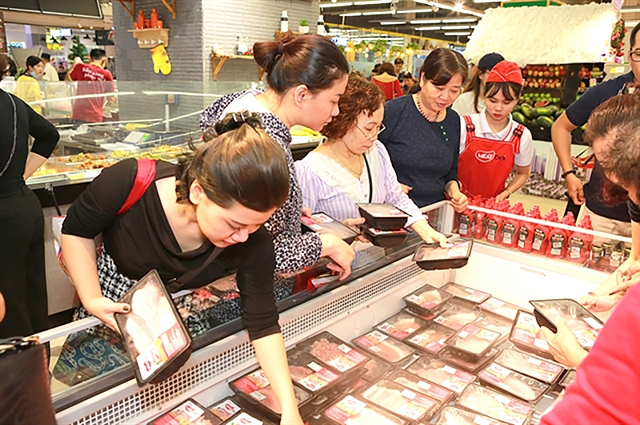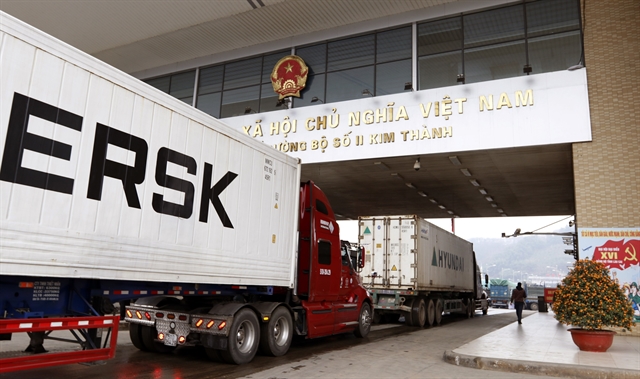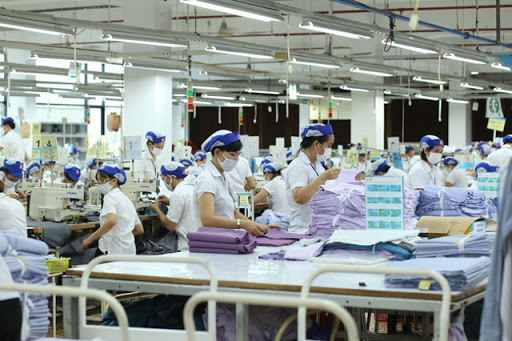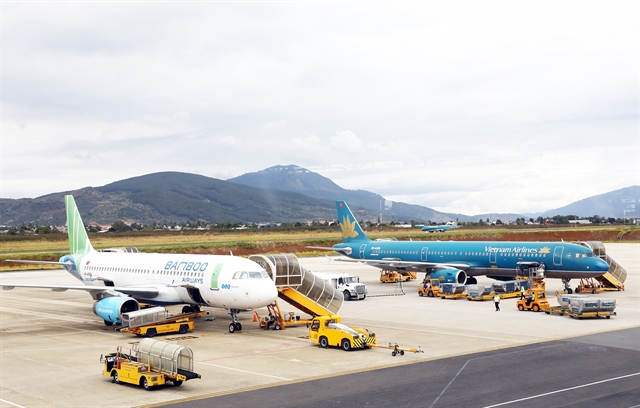
Việt Nam’s export of some agricultural products such as rice, aquatic products and fruits has experienced many challenges recently. The Ministry of Industry and Trade (MoIT) is taking many measures to fight against origin fraud to protect Việt Nam’s export industries from litigation risk arising from the evasion of trade remedies.
Vietnam News Agency spoke to Trần Quốc Toản, deputy director of the ministry’s Import and Export Department, about the challenges facing Vietnamese enterprises as well as State’s support on this matter.
In the first quarter, Việt Nam’s agricultural exports, including rice, benefited from rising prices but export volume decreased compared to the same period in 2020. What are the reasons and the direction for rice export in the future?
Facing many difficulties amid the COVID-19 pandemic, Việt Nam’s rice export achieved positive results. Although the export volume decreased, the turnover growth brought benefits to rice farmers.
Vietnamese rice exporters are increasingly focusing on improving quality, traceability and striving to meet the strict standards of demanding markets such as the EU, South Korea and the United States. This is one of the factors that have helped improve the competitiveness of Vietnamese rice.
Export data to a number of high-end markets in recent years have shown positive signals on the improvement of the quality of both rice and the enterprises themselves.
Việt Nam’s rice export structure has been gradually shifting to high value-added rice such as fragrant rice, accounting for 27.15 per cent of the total export volume; japonica rice, 3.39 per cent; sticky rice, 9.26 per cent.
The current average export price has ensured farmers' profits when compared with the average cost of paddy planned for the winter-spring crop 2020-21. In addition, Việt Nam has signed many free trade agreements (FTAs) with many strategic countries that have helped the Vietnamese rice brand become better known, expand markets for high-end rice and specialty rice at higher prices, contributing to the increase in export value for Vietnamese rice.
In order to boost rice export in the future, the MoIT will increase coordination with other ministries and the Việt Nam Food Association to support businesses to implement FTAs effectively.
The ministry will continue regular coordination with the Ministry of Agriculture and Rural Development, which is leading the rice industry restructuring process and take drastic and comprehensive measures to improve the value and quality of Vietnamese rice, building and developing Vietnamese rice brand.
Besides the support from State management agencies, businesses need to actively prepare plans to strengthen their capacity, source of goods and improve competitiveness through building long-term and disciplined strategies to strictly comply with regulations on traceability, build and protect brands towards sustainable exports.
It is also necessary to proactively develop cooperation and linkage to enhance strength, create supply chains and prepare measures to deal with trade remedies and lawsuits through monitoring market and price developments.
Recently, many seafood and fruit products are facing challenges to maintain and expand in key markets, including the United States. What solutions has the ministry prepared to support businesses?
Vegetables and fruits have enjoyed impressive export growth for many years with an average growth rate of 14.1 per cent during 2016-20.
However, due to the adverse impacts of COVID-19, export value of this sector reached only US$3.3 billion in 2020, down 12.7 per cent year-on-year. In the first quarter of this year, the export turnover reached $944 million, up 6.1 per cent year-on-year.
The United States is the second largest export market with a market share of about 4-5 per cent of Việt Nam's total fruit and vegetable export turnover. The export growth averaged 24.4 per cent in the last five years.
In 2020, despite the pandemic, vegetables and fruits shipped to the United States fetched $168.8 million, maintaining a growth rate of 12.5 per cent, of which, fruit export was $72.9 million, down by 8.5 per cent year-on-year. In the first two months of 2021, the export of vegetables and fruits to the US reached $23.4 million, up 3.7 per cent, accounting for 4.2 per cent of the export turnover of the whole industry.
To date, six types of fresh fruits from Việt Nam have been allowed to be shipped to the US, including dragon fruit, longans, lychees, rambutans, star apples and mangos. However, the amount of export is insignificant because of high costs such as transport, storage, quarantine and irradiation treatment which make them less competitive than from other countries that geographically nearer.
The export of processed fruits and vegetables has seen positive growth due to the change in demand and taste of consumers. This type of products with the advantage of long storage time prevails in the pandemic.
For seafood products, the export turnover in 2020 reached $8.4 billion, a decrease of 1.5 per cent year-on-year, of which exports to the US increased the most, reaching more than $1.6 billion, up 10 per cent thanks to sharp increase of 33 per cent in shrimp exports. In the first two months, seafood exports to this market continued to rise by 5.4 per cent year-on-year, reaching over $189 million.
Currently, the demand for seafood imports of the US market is recovering. The structure of products has also changed amid the pandemic. Therefore, the product segment serving retail channels, home consumption with high convenience such as ready-to-eat, instant food, dry food and canned food with reasonable prices is and will have more room to grow in the US this year.
In addition, the high rise in shipping rates and the lack of empty containers for packing in the past few months have also directly impacted seafood export activities.
According to the Association of Seafood Exporters and Producers (VASEP), by the end of 2020, foreign shipping lines increased freight by two to three times, even six to seven times in some sectors but enterprises were still unable to arrange vessels and containers for export. Enterprises supplying seafood materials from abroad also could not book vessels to ship raw materials to Việt Nam.
In order to support businesses to overcome difficulties, maintain and promote the export of agricultural products, especially to the US market, the ministry is taking many measures to fight against origin fraud to protect Việt Nam’s export industry from litigation risk arising from the evasion of trade remedies..
The ministry will update the situation on prices and markets to promptly notify and guide associations, enterprises and production establishments to organise their production plans.
Also it will proactively update the application of trade protection measures, promptly inform relevant agencies and businesses, and effectively fight against unreasonable technical barriers from the US market for agricultural products, including Vietnamese seafood and fruits.
In addition, the ministry will continue coordinating with the Ministry of Agriculture and Rural Development to accelerate the negotiation of the technical market to expand the list of Vietnamese goods/enterprises permitted to export to the United States, as well as carry out effective and suitable export promotion programmes for agricultural products.
Regarding the rising freight charges, the ministry has reported to the Prime Minister and will continue working closely with the Vietnam Logistics Business Association and other relevant industry associations to facilitate the distribution and balanced use of container rotation. — VNS































